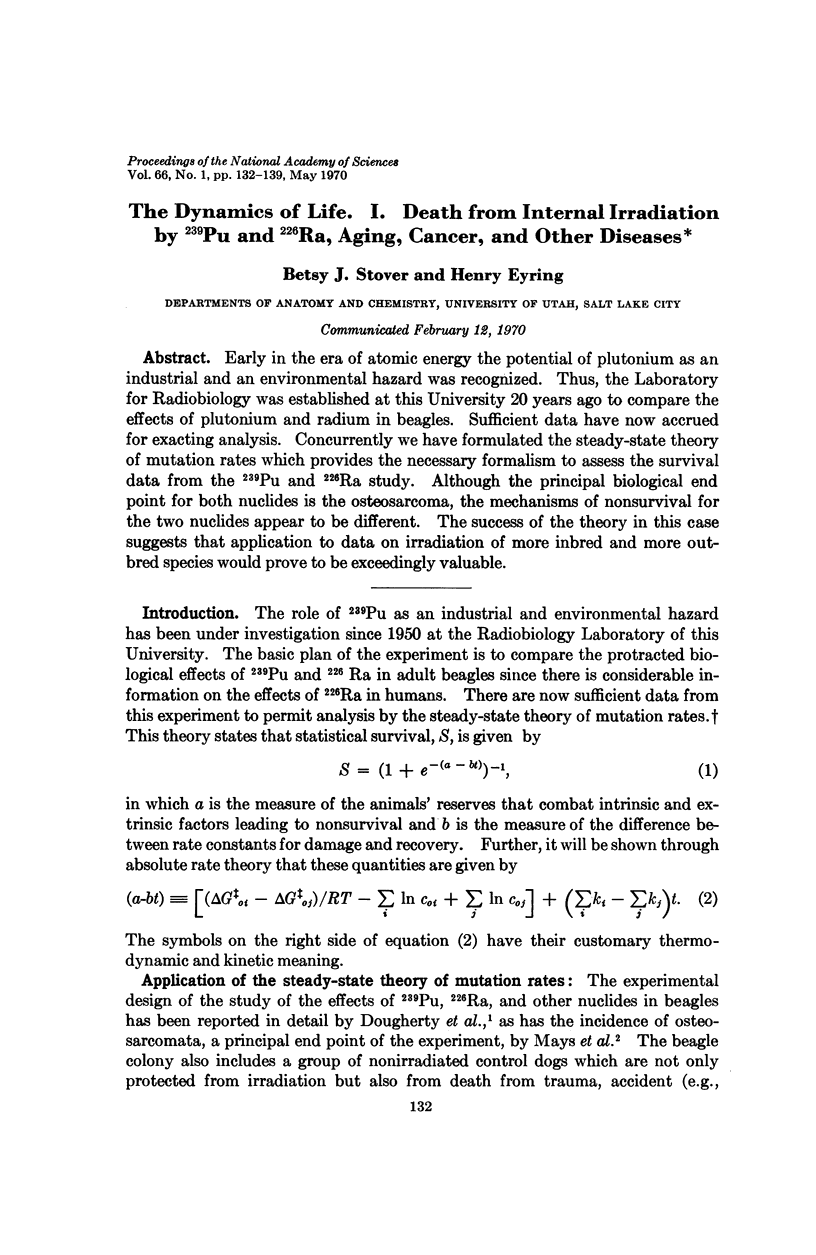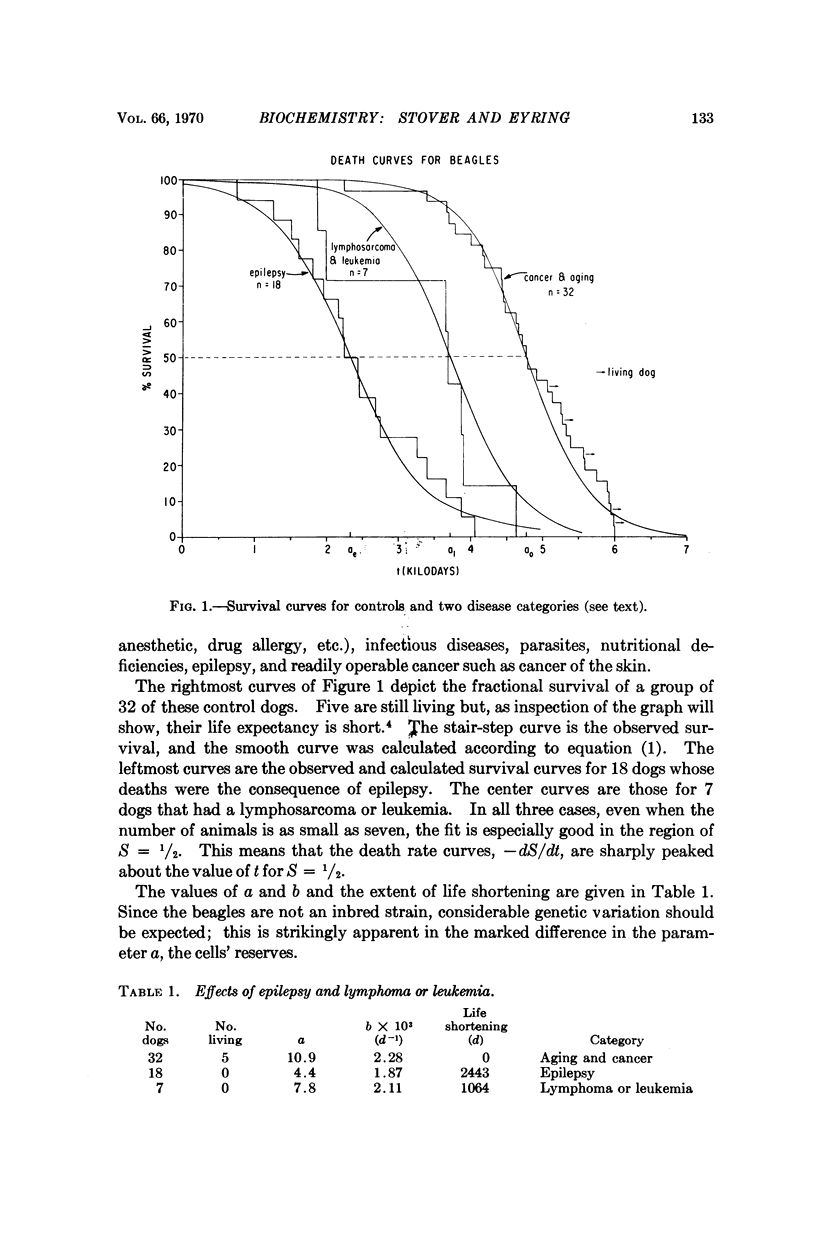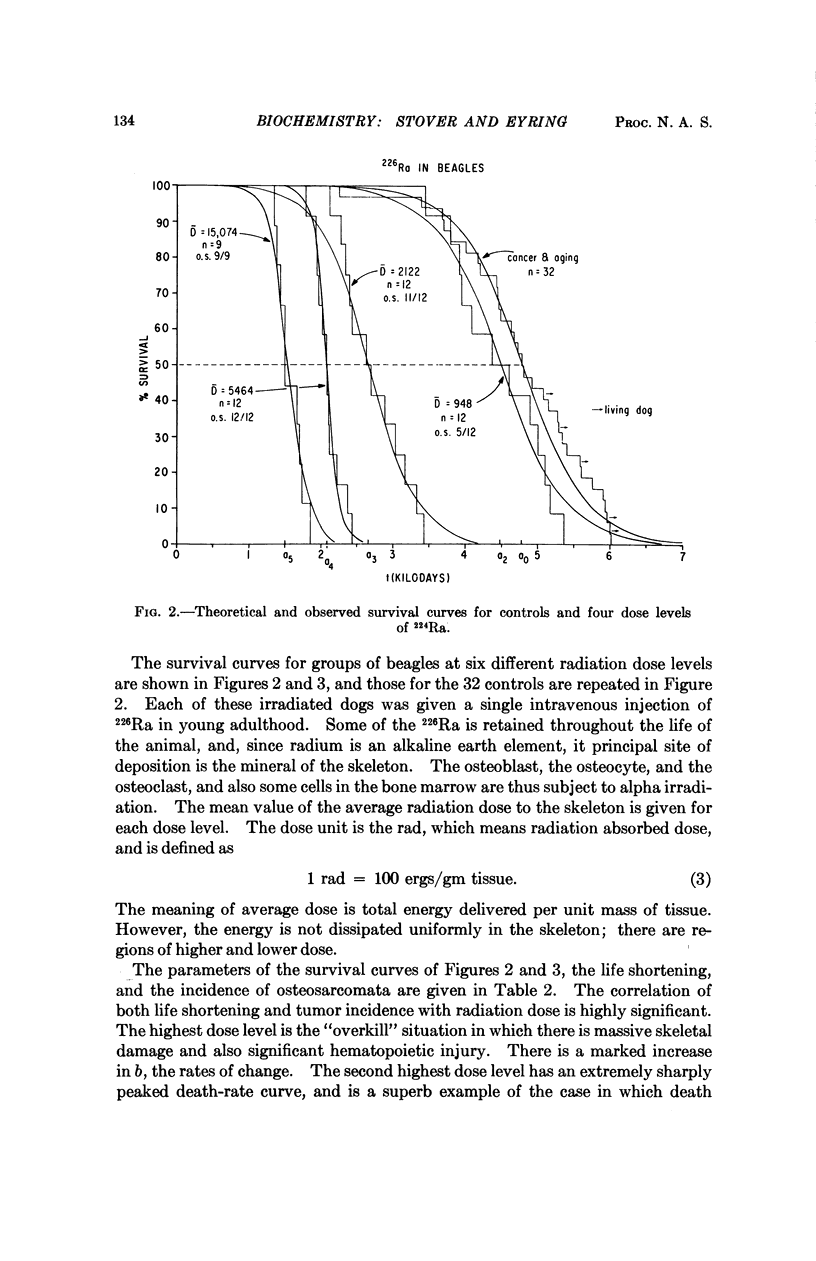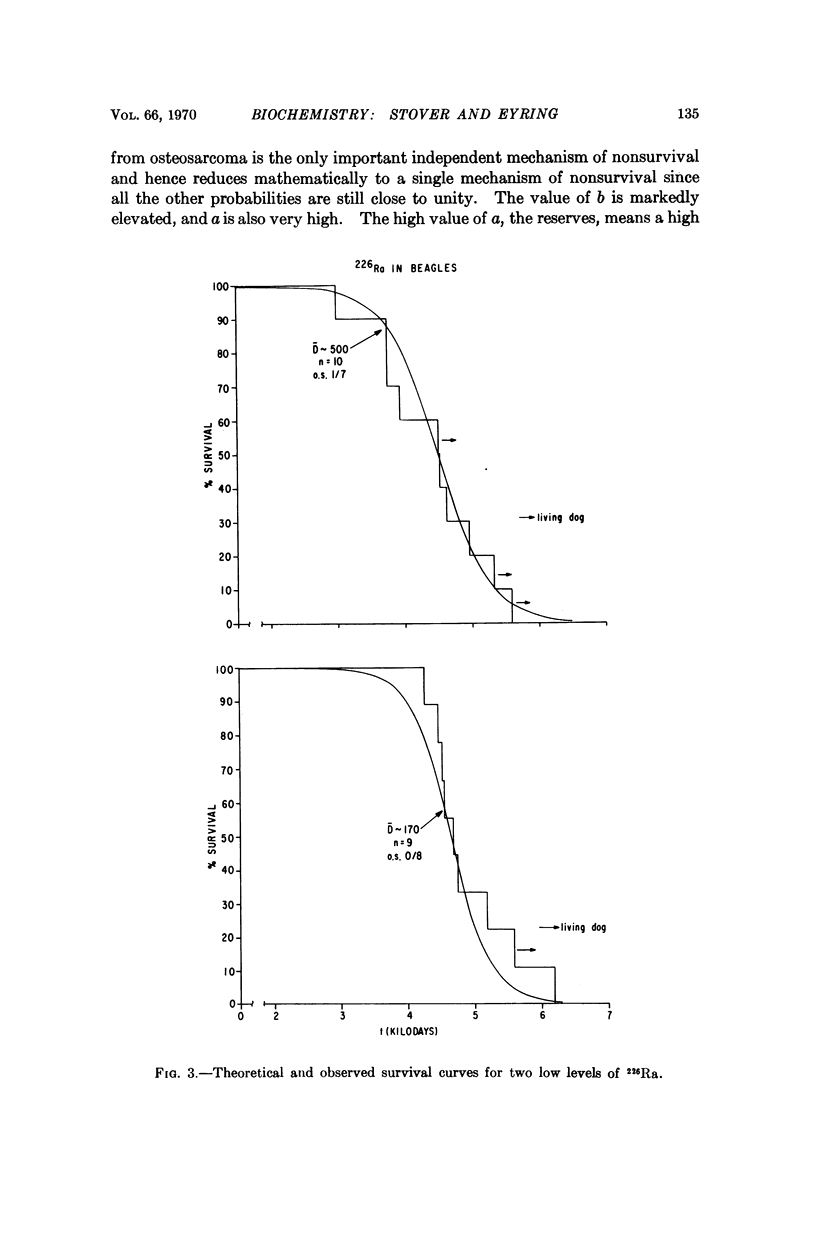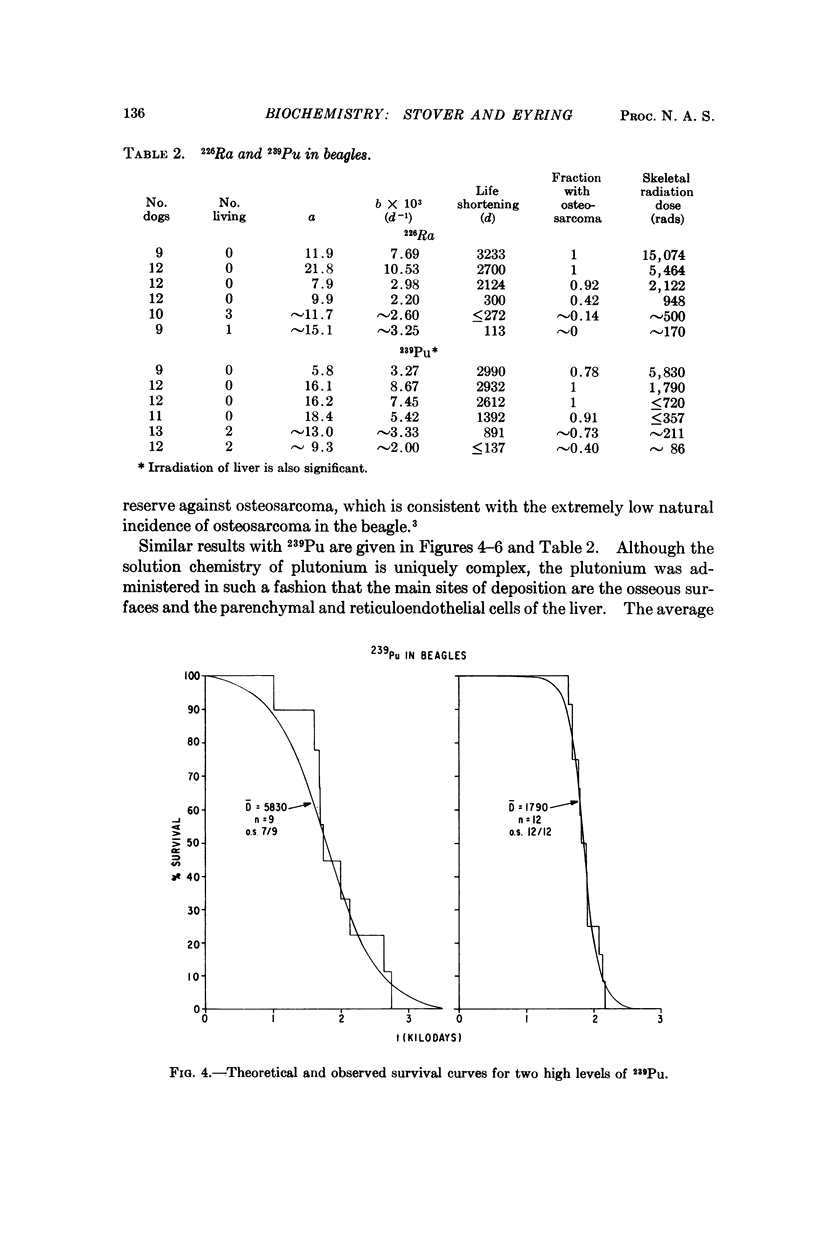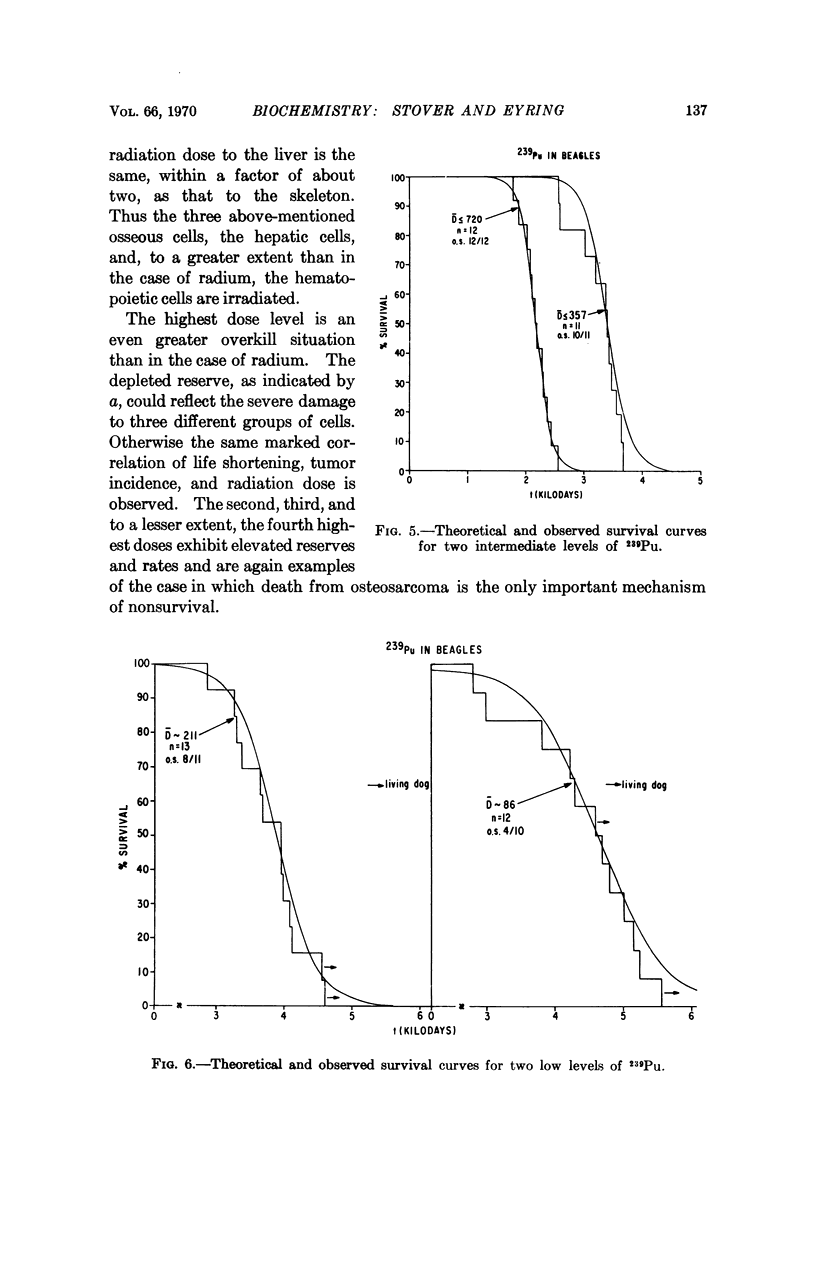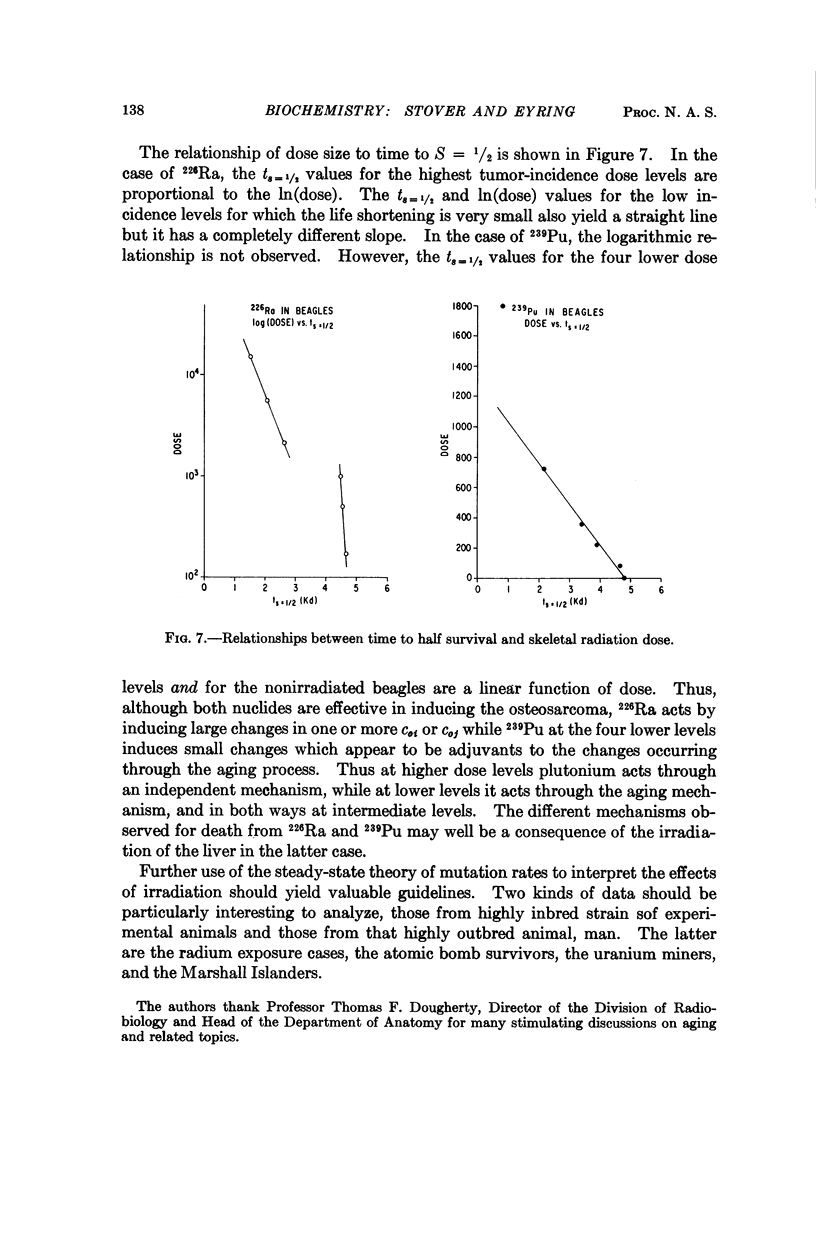Abstract
Early in the era of atomic energy the potential of plutonium as an industrial and an environmental hazard was recognized. Thus, the Laboratory for Radiobiology was established at this University 20 years ago to compare the effects of plutonium and radium in beagles. Sufficient data have now accrued for exacting analysis. Concurrently we have formulated the steady-state theory of mutation rates which provides the necessary formalism to assess the survival data from the 239Pu and 226Ra study. Although the principal biological end point for both nuclides is the osteosarcoma, the mechanisms of nonsurvival for the two nuclides appear to be different. The success of the theory in this case suggests that application to data on irradiation of more inbred and more outbred species would prove to be exceedingly valuable.
Full text
PDF